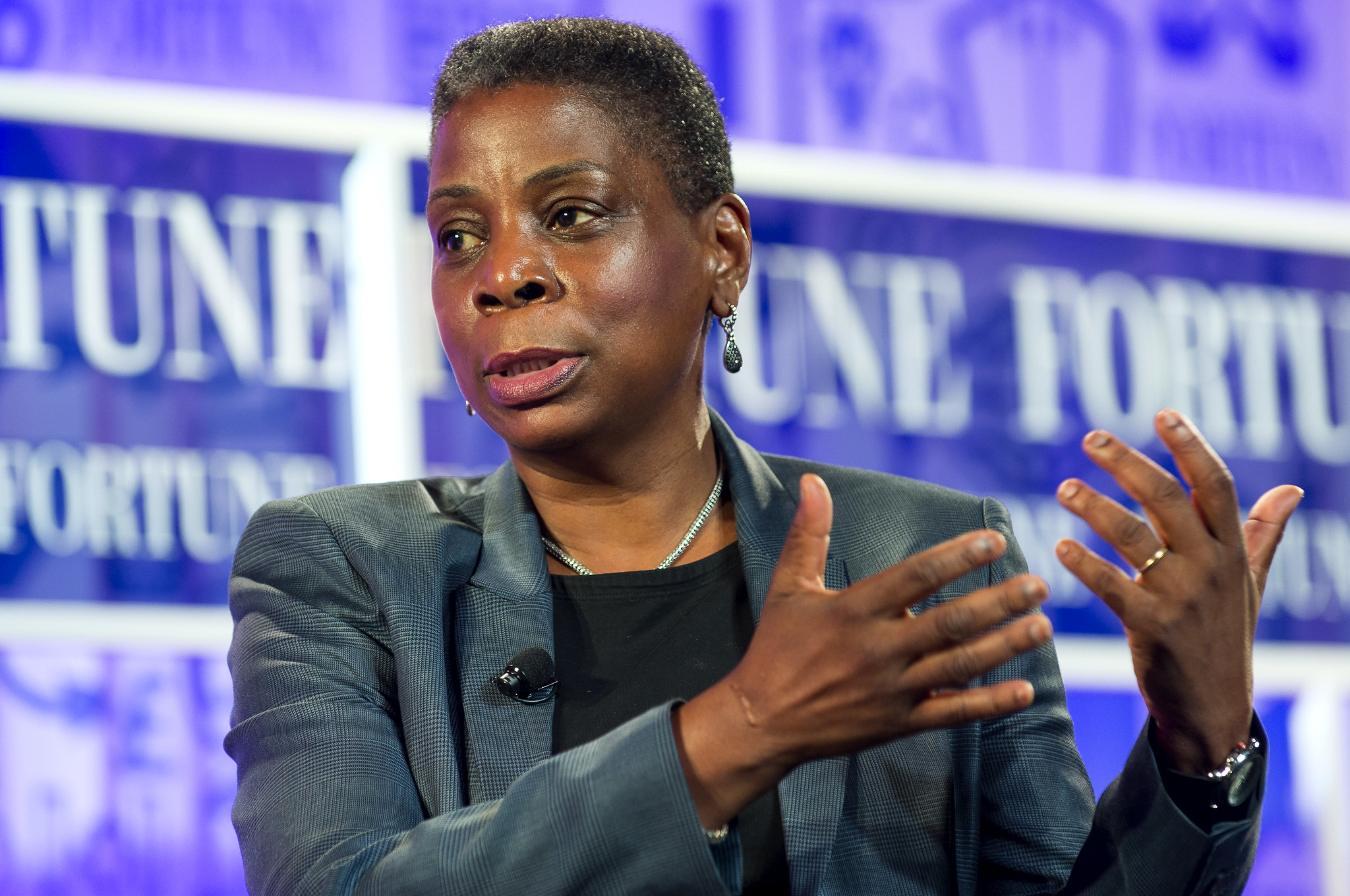
Image: The exit of longtime PepsiCo CEO Indra Nooyi leaves only two women of color at the helm of America's largest companies.
After reaching an all-time high of 32 in 2017, the number of female CEOs at Fortune 500 companies dropped by 25 percent in the past year.
Longtime PepsiCo CEO Indra Nooyi will step down in October, leaving only 24 women at the helm of America’s 500 largest publicly-traded companies. Kathy Warden will bring the number back up to at least 25 when she takes over as CEO of Northrop Grumman in January, but Nooyi’s departure highlights another glaring statistic: in her absence, only two Fortune 500 CEOs are women of color. None are African American.
Black women also make up less than 2 percent of middle managers in the Fortune 500, leaving a shallow pipeline from which to pull new additions to the C-suite.
Ursula Burns, who left the CEO role at Xerox in 2016, is the first and only black woman to occupy the top spot at a Fortune 500 firm. In a 2017 interview with Fortune magazine, she ran down a list of reasons why, citing school systems that fail to prepare low-income kids for work and workplaces that relegate women—particularly women of color—to supporting roles.
“Look at the numbers of women we have now,” Burns told Fortune, referencing corporate America’s upper echelon that essentially becomes the talent pool for future CEOs. “Unless you’re bringing people in from Mars, it’s going to be a while.”

Image: Ursula Burns, former CEO of Xerox.
Burns, too, stood out in the crowd as she rose through the ranks at Xerox. “In the early part of my career, I was one of very, very few women, and I was the only black woman,” she told Time magazine last year. “If you work in a business environment, the thing that makes the place rock and roll is actually getting all of those differences to benefit everybody else.”
Of course, she knows this is easier said than done—particularly for minority women, who research firm Catalyst calls “double outsiders.” Men of color are still men, and white women are still white, giving them a foundation on which to connect with the decision-makers at their companies. As such, they’re more likely to get mentorship and sponsorship opportunities from their superiors, who are probably white and male. Minority women struggle to achieve the same and often grow demoralized at work, as they’re passed over for promotions and subjected to micro-aggressions that diminish their accomplishments.
“This is what we call an ‘emotional tax,’” Dnika J. Travis, an executive and researcher at the Catalyst Research Center for Corporate Practice, told Fortune. “The burden of being on guard all the time affects our lives in really negative ways.”
A longitudinal study of black women who received an MBA from Harvard Business School—arguably the most competitive business school in America—confirmed Catalyst’s findings. Within 40 years of graduation, only 13 percent of black female Harvard MBAs reached the senior-most executive ranks, compared to 40 percent of Harvard MBAs overall. Of the black women who managed to reach the top, many said they struggled to “be themselves” at work and felt “on display” in their workplaces. “It makes you work hard to make sure you’re never misstepping,” one black female CEO said, as quoted in the Harvard Business Review.
Pushing back on these institutionalized realities won’t be easy—as Barbara Whye, Intel’s chief diversity officer, told Fortune, “You can’t hire your way to success on this.” But data shows that companies will reap bottom-line benefits by improving gender and racial diversity, even marginally.
Companies with women in at least 15 percent of senior management positions return 18 percent more profits than their peers with less gender diversity, according to a 2016 study from Credit Suisse. Those with the most ethnically diverse executive teams are 33 percent more likely to outperform their peers on profitability, McKinsey & Co. found this year.
For their part, a growing number of minority women aren’t waiting to get noticed at America’s top firms. As of last year, nearly 4 million black and Hispanic women sat at the helm of their own companies, and women of color start between 600 and 800 new businesses every day.
Though these firms often struggle to get funding—women receive around 3 percent of annual venture capital investment, and women of color attracted a mere 0.2 percent of all VC funding in 2015—many of them are scaling against all odds: Women of color are America’s fastest-growing entrepreneurial population, and their companies generated $360 billion in revenue last year.
“I think if you're a black woman, growing up in the U.S., you already know things are going to be a bit harder,” Kathryn Finney, whose firm Digital Undivided helps women of color build their businesses, told Vox. “It's not anything we can't do.”
Image credist: Flickr/Fortune Live Media and Fortune Conferences

Mary has reported on sustainability and social impact for over a decade and now serves as executive editor of TriplePundit. She is also the general manager of TriplePundit's Brand Studio, which has worked with dozens of organizations on sustainability storytelling, and VP of content for TriplePundit's parent company 3BL.














